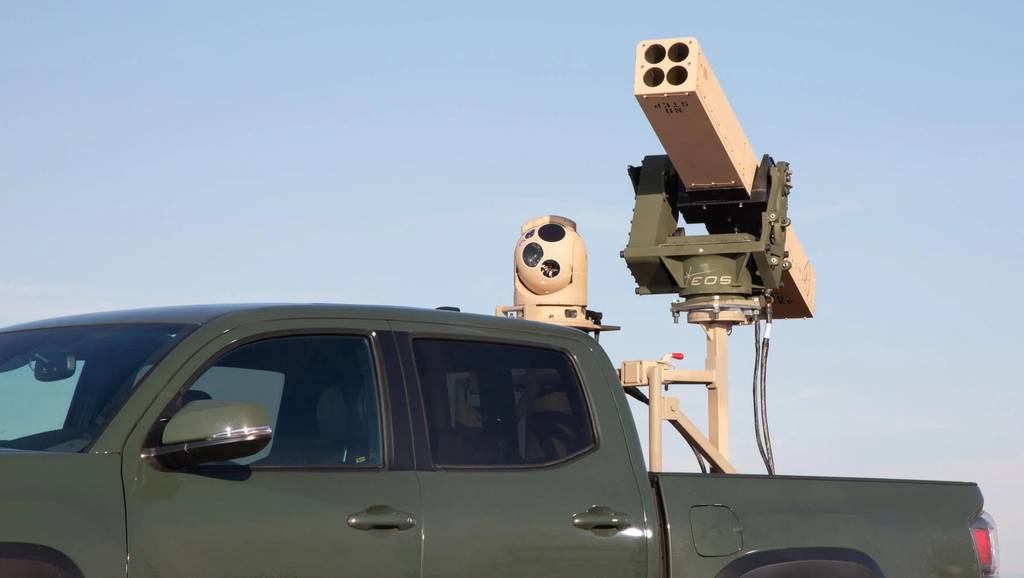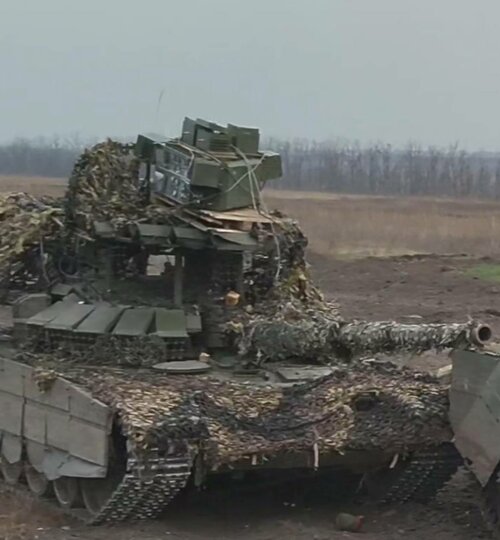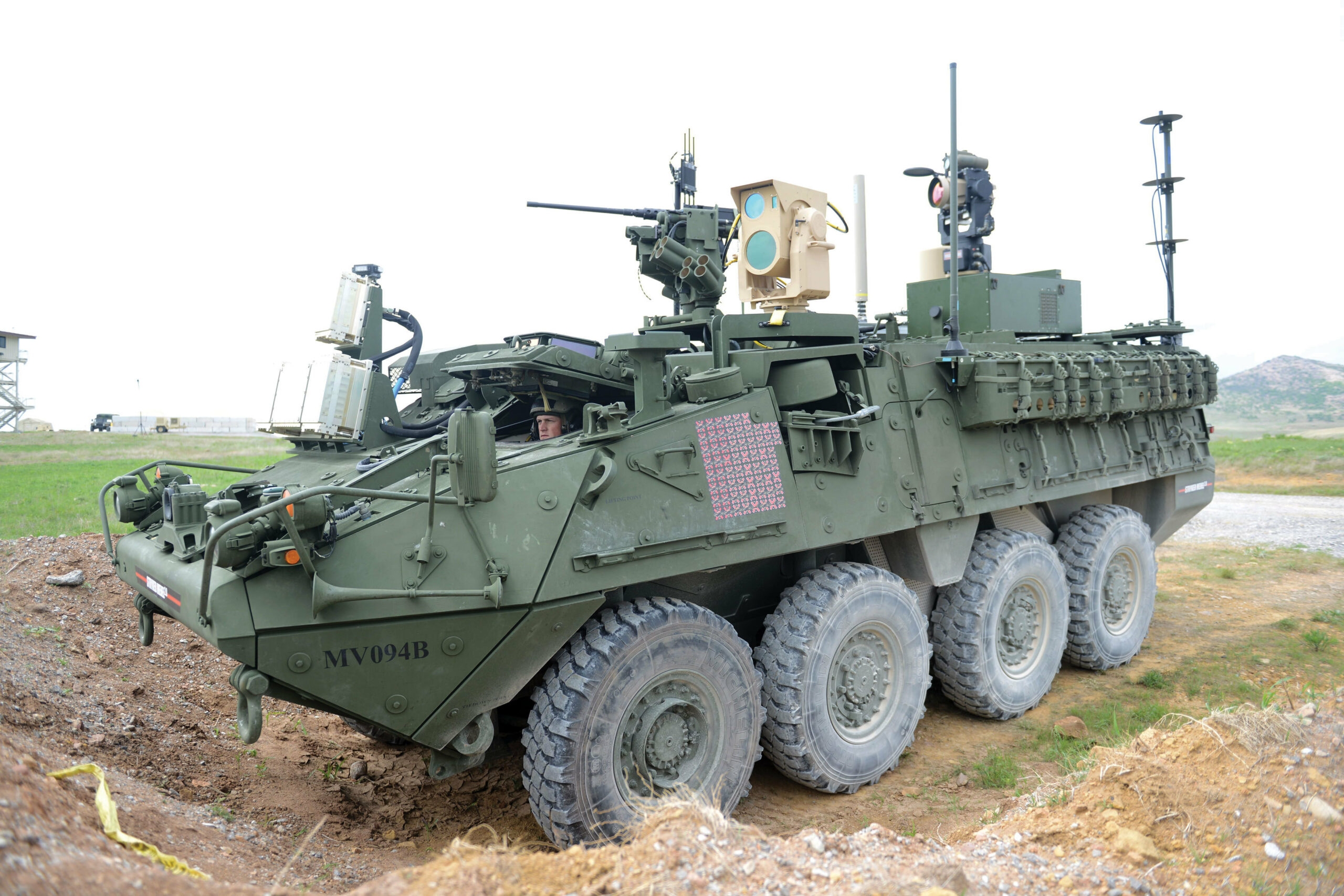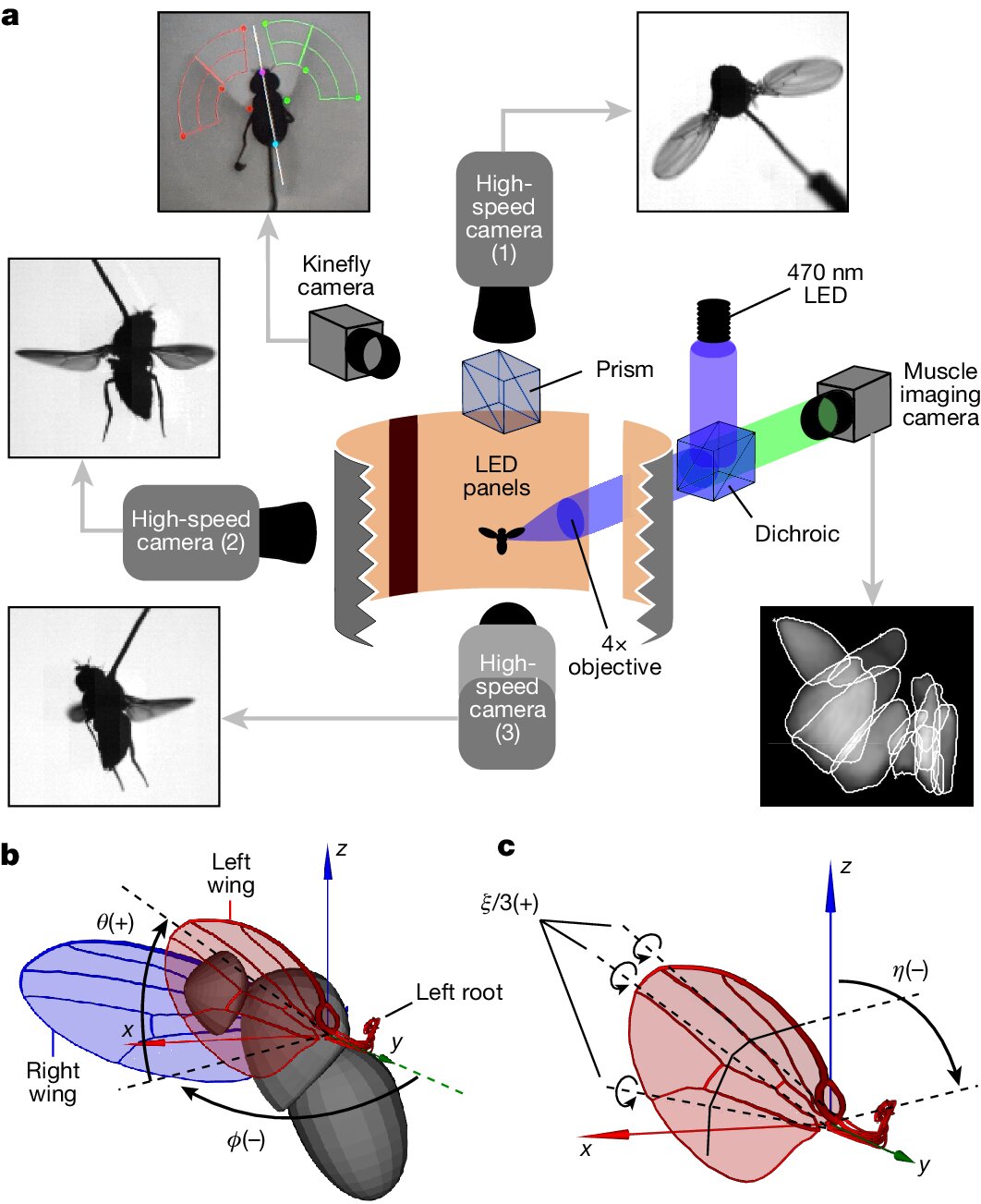Small and medium-sized UAVs with various capabilities have become commonplace in combat operations during the past two and a half years of war, with large-scale suicides on both sides
UAVs work more deep in the rear. Frontline UAVs greatly expand reconnaissance capabilities and can guide artillery. Some UAVs will scout
Function combined with ammunition throwing. There are also specialized large unmanned "bombers". In addition to this, there is a separate, latest and most
Breakthrough categories: fast-moving FPV and disposable suicide UAV. All these lethal tactics require protective measures.
1. Types of UAV
1. Civilian quadcopter
Mainly the DJI Mavic series are used for reconnaissance, they can guide artillery or attack UAVs. They can accompany assault infantry teams in combat, keeping them informed of the situation. Some versions of UAVs have thermal imaging systems that allow them to operate at night. They scout from an altitude of 200+ meters and it's hard to even see them from the ground, let alone try to shoot them down.
The same small four-axis UAV, just good for dropping a variety of munitions. When accurate bombing is required, the UAV must descend 100 meters or less.
Particularly careless or inexperienced operators can descend to 50m or less, but this is rare. You shouldn't expect such careless behavior from enemy operators.
2. Medium-sized conventional layout UAV or "wing" type UAV.
They work at an altitude of hundreds of meters to thousands of meters, and generally have a maximum altitude of 1,500-2,000 meters. Their main function is reconnaissance.
Large unmanned "helicopter" (nicknamed "Baba Yaga") with large payload: weight 5-10 kg and above. They were used in bombing equipment and bomb shelters. Slow, noticeable, noisy, low-flying, and fought primarily at night.
3.FPV
A simple quadcopter with a warhead mounted on a structural kit that can carry explosive devices for suicide attacks. It is controlled remotely by the operator via a remote control. The FPV camera's image is displayed on the screen of the operator's mask, resulting in a first-person effect.
FPVUAV can be used as a "kamikaze". Typically, the target is found via another reconnaissance UAV. During the final blow, the operator himself takes part in targeting and leading. FPV dives onto the target, with the warhead detonating on contact (some are programmed to detonate in the air).
2. UAV control principle
Civilian quadcopter
UAVs and FPVs are controlled via radio channels with various frequencies, including radio channels modified to non-standard frequencies, to circumvent
through electronic warfare. The operator controls the UAV via a remote control. On the UAV, there is a receiver for control commands and a transmitter for video signals
(Repeater). UAVs use various antennas and signal amplifiers.
This type of control is susceptible to electronic warfare. But this is the eternal struggle between "spear and shield": changing frequency, scanning, choosing
Select, adjust, and maximize frequency band coverage.
The "Baba Yaga" UAV is usually remotely controlled through the Starlink satellite network, and the terminal is installed directly on the UAV from above. this makes
This type of equipment is not sensitive to electronic warfare.
As electronic warfare develops, (so far) various wired UAVs are being tested, such as fiber optics, etc.
Protection methods against UAVs
The first line of security is shadow hiding, which is not only camouflaging from the front, but also camouflaging from above and cleaning up the surrounding garbage.
The camouflage net should be integrated with elements of the surrounding terrain: tree branches, grass. The edges of the camouflage netting should be hidden so that they are not visible from above.
will stand out. Use UAV to check disguise quality. If possible, cover with a thermal imaging protective cloak.
Second layer of protection: trenches, air raid shelters with "L" shaped entrances. In this way, even if the enemy notices, it is more effective to use UAV bombs or FPV strikes.
Hard to cause damage. (Recently, I have seen fishnet-type camouflage nets or doors removed from abandoned houses, etc.)
The third layer of protection: personal protection measures, bulletproof vests, helmets; additional protection for key locations: neck, thighs, etc.
The same goes for equipment: additional protection, of course, "grills", nets, grilles, explosive reactive armor, etc.
The fourth layer of protection is when shrapnel has hit and injuries have already occurred: first aid equipment is available in several places. Hemostatic agents and tourniquets, dressings
bag, painkillers. The front of the vest, within easy reach of either hand, the pants pocket and a small tactical backpack (if you have one)
talk).
Ways to combat UAVs
Methods to combat UAVs can be divided into:
Kinetic energy (shooting)
electronic warfare;
Using UAVs to combat UAVs is also becoming a novel but increasingly common approach. (Launch capture net or collide...)
Against conventional layout UAV (with wings)
If the UAV drops below 1,000 meters, then small arms still have a chance, but even with tracer munitions it will be difficult to hit. After all, up
The ballistic trajectory when shooting is different from shooting along the ground, and the "wing" UAV flies at a relatively high speed.
Ways to effectively combat this UAV:
1. Portable anti-aircraft missiles (MANPADS)
2. Anti-aircraft guns, such as the 57mm S-60, are more commonly used against ground targets. But they can also work depending on the purpose.
3.Heavy machine gun
This type of UAV is also used by manned aircraft or helicopters. But this is more about what happens when large long-range suicide UAVs (as distinguished from smaller winged reconnaissance UAVs on the front lines) fly into the rear.
Anti-UAV guns are useless from the perspective of electronic warfare means. Only a more powerful "dome" electronic warfare system covering more frequency bands can effectively combat such high-altitude UAVs.
Fighting against civilian quadcopters
When used as reconnaissance aircraft, the Mavic and other similar aircraft often fly at altitudes exceeding 200m. Therefore, electronic warfare can better deal with this type of UAV.
Electronic warfare:
1. Directional electronic warfare (anti-UAV gun)
2. A detector (“Bulat” or similar) can detect UAV signals. The advanced search system not only indicates the UAV model (it
What it is: DJI, FPV...), it can also instantly display its frequency and even the sector of the sky where the "bird" is located.
3. Acoustic UAV detectors are also being developed that can capture propeller sounds without reference to radio control frequencies.
At the direction of the detector, the expensive Dome electronic warfare operator sets the desired frequency and turns on the jammer.
Using directed electronic warfare means (anti-UAV guns) is even more difficult. Their frequency range is small and standard. If the adversary makes good use of frequency hopping or changes the frequency to a non-standard frequency, it will not be able to affect the UAV.
In this regard, the Dome electronic warfare system is more reliable because, whether it is good or bad, it covers more ground.
If the UAV frequency coincides with the frequency on the counter-UAV gun, you still need to visually see the UAV and at least roughly orient the jammer
Aim the beam at it. If a UAV with a signal booster is controlled via a powerful antenna, compared to a standard antenna ("out of the box")
UAVs are more difficult to suppress.
If the frequency on the UAV is not standard, trying to smash it with an anti-UAV gun may turn into a tragedy... the "bird" will fly without any hindrance.
OK, fly up and down near the tight controller of the anti-UAV gun. The controller will be so nervous that instead of maneuvering and dodging ammunition, he will
Find yourself standing in the open: the impact zone of a grenade, VOG, or some kind of IED... So if you have the means, You need to try to use the anti-UAV gun, but also remember the movements, just in case. See where to jump, fall, roll backwards, snuggle...hide avoid possible blows.
In this regard, Dome electronic warfare wins. It's more powerful and you don't have to aim anywhere. But, of course, such systems are more scarce,
More expensive, less mobile, noticeable, and potentially a target in its own right.
When a UAV is struck by electronic warfare, it loses contact with the operator's console and typically seeks to return to its starting point. Even without satellite positioning, advanced programs can carry out such an escape, and it is difficult for electronic warfare methods to interfere with satellite communications.
Small arms:
If the operator of the quad-axis UAV is inexperienced (or just rude), perform the descent, at an altitude of approximately 200 to 50m. Can theoretically be shot down by a soldier's personal small arms fire: use an assault rifle or machine gun (RPK, PKM).
What to focus on when in trouble. A shooter who focuses on shooting a UAV may end up with a fatal outcome if he focuses on shooting and trusts himself too much. There are many similar scenarios that have been captured on film with UAVs: the shooter who fired at the UAV was shot. Passionate shooters themselves become victims.
As an alternative to shooting, you can take shelter in the "Fox Cave", the entrance of which is blocked from above by a cover and the action there cannot be seen from above. Or nestle in a tree, sitting at the base of the trunk and lowering the profile. If available, cover with a thermal imaging cape. Monitor UAV actions. Prepare for possible blows. Try to dodge. After dropping the ordnance, the UAV will fly away. Even on the shortest of shifts, it's possible to improve position and find cover.
It's more effective when you don't try to take down it alone: several fighters fire at a UAV at the same time. If the UAV's angle is about 45 degrees and below 200 meters, aim strictly toward the middle. If it's about 60 degrees, you're aiming for the bottom. If it is almost vertical from above, about 80-90 degrees, you need
Need more lead time.
Using tracer bullets is a good idea. When shooting at ground targets, there are always previous hits and "splash". But you won't encounter these problems when shooting from the air.
At night, it's difficult to notice a small UAV. Only thermal imaging cameras and tracer rounds can help. It would be better not just an assault rifle, but a PKM machine gun or at least an RPK heavy-barreled automatic rifle.
Again: To protect yourself in the event of a UAV strike, it is more profitable to hide and duck than to try to shoot down with a rifle. Especially if the "bird" is at its maximum height, within a height of 180-200m. You will 100% leak your location. If the UAV is not hit, they will be able to direct the artillery accurately, or they will send the FPV or UAV to strike.
It is best when all levels of protection and countermeasures work in a complex: camouflage, excavation, detectors, electronic warfare.
Small arms are only the last and least effective method.
Musket (shotgun):
There is a lot of discussion about shooting down UAVs with civilian smoothbore weapons, mostly 12-gauge shotguns. In fact, there are many problems with this.
First of all, the effective range of shotgun shells: at a distance of 40m or even 30m, even if the projectile directly hits the UAV, it will not penetrate the body or even be damaged. During testing, a shotgun blast resulted in one of the propellers being penetrated (apparent impact, no damage to the
line), but did not cause the UAV to fall. Stabilization procedures corrected the UAV after impact. In harder spots, sometimes the shotgun won't even do any damage.
(Note: It feels like using birdshot instead of deershot....)
Even those UAVs that are penetrated by 5.45mm rifle rounds can be returned to the operator repeatedly.
Secondly, if the operator of the reconnaissance UAV was sensible, he would not fly so low. They could only get so low on positions destroyed by artillery when they thought there was no threat. The zoom of the UAV camera allows you to see everything you need without risking losing the "bird"... Therefore, a reconnaissance UAV descending below 40m is an anomaly and does not deserve enough attention.
In addition to the rifle, the infantry could not use the shotgun as a second non-standard weapon, which itself was heavy and the ammunition was heavy (12 gauge cartridges were heavy).
It's not uncommon to hear soldiers complain about how much equipment they have to carry. Many items were left in concealed locations during the attack to reduce weight.
The shotgun is therefore heavy as a secondary weapon, as is its ammunition, so its areas of application and effectiveness are highly debatable.
Third, when shotguns are in standard service in the military: Even among the special forces of the National Guard, this gun was fragmented and used more as a rubber bullet launcher... that is, not used in combat at all.
Some have found 12-gauge shotguns as trophies in homes in war zones. Someone carries it around and somehow solves the bureaucratic problem. Ammo costs your own money. It may be possible for shotguns to enter military service on a large scale, but this is a stopgap measure that is still being debated. Maybe it will get that far, but opinions are divided so far.
Against FPV
UAVs such as FPV can be shot down through electronic warfare. Because there is no advanced stabilization system like civilian quadcopters, the FPV will only fall when disturbed.
The problem is that the other party's FPV or UAV uses different frequencies. Standard anti-UAV guns often become ineffective. It’s clear what will happen if you try to crush an FPVUAV with a “gun” of the wrong frequency…or worse, strike at the feet of the operator of such an electronic warfare system…using a wearable with a built-in multi-band jammer Backpacks are better against FPV and UAV. It would be nice to have a detector that allows you to read the exact frequency and adjust and turn on the necessary channels.
But usually the warriors just cut everything (frequency) off. To work smartly and competently, you can achieve countermeasures against enemy UAVs, but continue to keep your own UAVs in the air and use them effectively.
(Note: It seems that a directional antenna is needed to set the interference range??)
Electronic warfare equipment suppressed the UAV. But these tools are not always effective, they emit energy, can be detected by enemy electronic reconnaissance and can be hit, and they do not "fly." Therefore, electronic warfare equipment needs to be turned on and off carefully and in a targeted manner.
As for kinetic methods, everything is complicated. On the one hand, FPV is "suicidal", descending very low and diving to the ground. So using rifles and shotguns, kind of like in the game... but FPVUAV is small, fast and maneuverable. And when such a UAV swoops down on the shooter
When hunting becomes a "last chance" shot, it's even harder to withstand the pressure.
After detecting an FPV or UAV with the help of sound, vision or detectors, you can try to hide behind trees and other obstacles. If there was a shotgun, it would obviously be favored here. The main thing is to have time to prepare, the experience of a clay pigeon shooter or duck hunter
This is where it will come in handy.
When the hellish "buzzer" of FPV is already nearby, at a distance of 30 meters or less, any shot is possible. But this is all in theory, or in practice, very paradoxically, everything is determined by a fraction of a second - literally
A duel with death............
Perhaps in order to combat FPV, there will be anti-UAV network launchers used at the "last minute". But let's be honest, how many of these weapons do we need to be issued in an army? Is it worth adding such weapons and ammunition to logistics, supply and production? How many people need it? How many people have the time to react and prepare for something like this? How many UAVs will be caught?
Summarize
Currently, there is a set of measures that are best suited for dealing with small tactical UAVs. In this regard, the "Dome" multi-channel electronic warfare system, including wearable devices, is the number one tool. It is necessary to develop such means, fill and saturate the troops.
Compact directional electronic warfare equipment, anti-UAV guns - they are still important in some places. But when the enemy switches completely to a non-standard frequency, it still can't catch up. The compact package can't accommodate that many channels or enough power.
Where do you get knowledge about electronic warfare? Contact your immediate commander, or a higher ranking officer. And so on, each unit (battalion level) has at least one electronic warfare officer. They teach and give away a lot of fun stuff for free. Or another channel: learn by yourself and gain through volunteers
have to. It's best to combine the two approaches.
Whether targeting UAVs or other threats in general, there is always a need for camouflage and fortification, group and individual protection.
Small arms are not a panacea, but a last resort.
Perhaps at some point, the UAV versus UAV fight will break through.
The "wing" UAV that combats high-altitude flying is an air defense force equipped with specialized weapons. For ordinary infantry, it is almost impossible to fight against such a "bird" with their capabilities.









